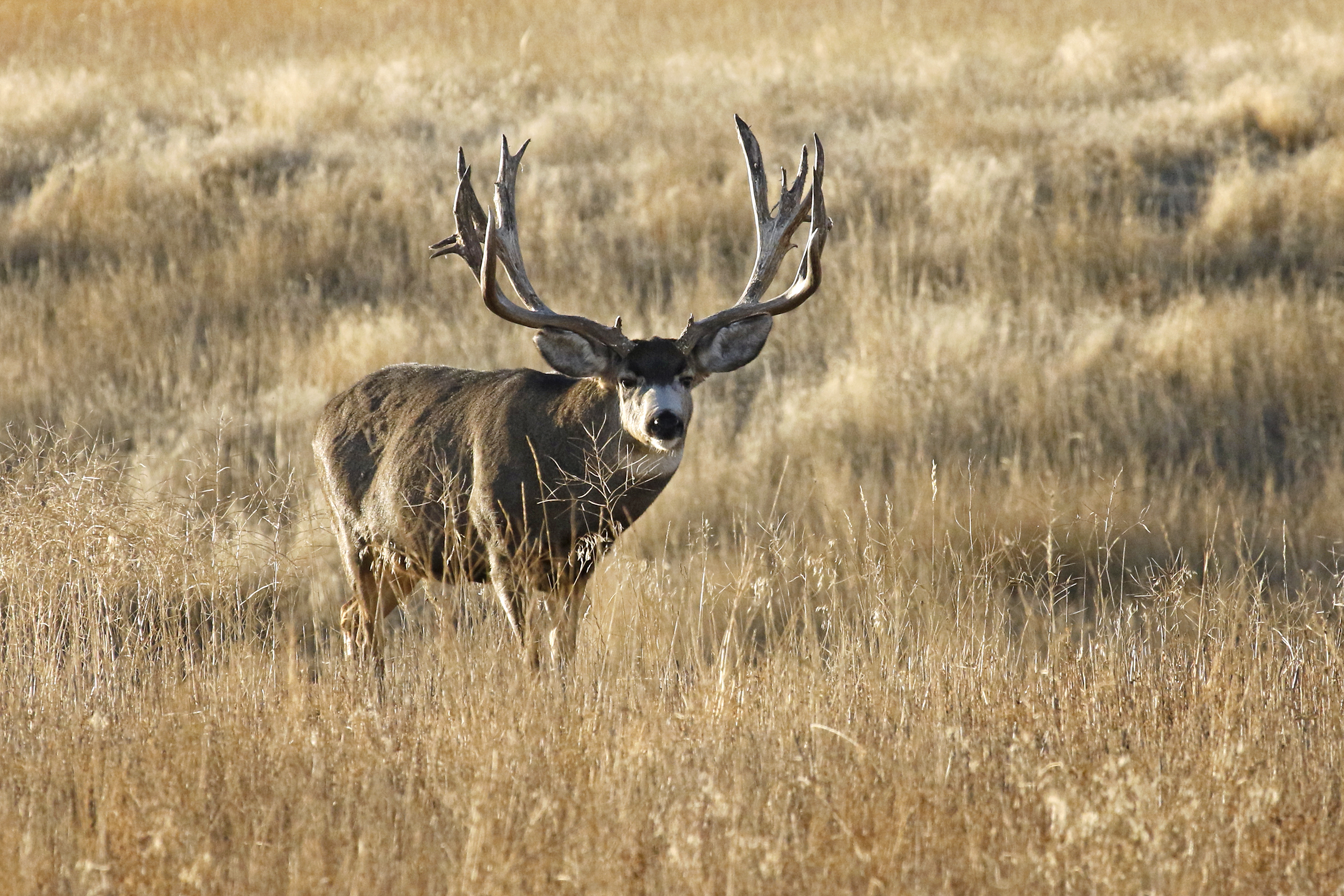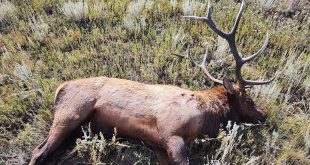
As I reported in my blogs on Chronic Wasting Disease (CWD) management in Wyoming in the spring (click here to read) and summer (click here to read) of 2020, the Wyoming Game & Fish management plan contains some potential management strategies that are very concerning, especially since there are still many factors we still don’t know for certain when it comes to CWD prevalence and lethality.
The Game & Fish is continuing the discussion on possibly moving hunting seasons later and/or targeting mature buck harvest on the winter range. While I commend the Game & Fish for their increase in surveillance and testing of animals to gather more information on CWD, there is still so much we don’t know with 100% surity and management strategies like this are very alarming.
What I’m about to line out is not popular to bring up, but I need you to hang with me here and walk through this logic. I’ve been dealing with the CWD topic in my career for over 20 years and until 2020, I hadn’t been asking the right questions on this disease and I’m concerned that those in game & fish departments around the country aren’t asking them either. I know the professionals I’ve talked to haven’t been and they didn’t seem to think their peers were either. Here we go…
Question #1: How do we know CWD is 100% fatal?
Currently there is no test for CWD on live animals. Reports are that researchers are working on tests for live animals, but they aren’t ready yet. The only concrete way to prove a big game animal has CWD is to take samples from dead animals, whether that be from road kill, from hunters at check stations, from hunters willingly sending in their samples to a lab for voluntary testing of their harvested big game animals, or from culling animals that appear to be infected.
Prevalence of CWD in the reports we hear, such as in this article from the Wyoming Business Report, are based on testing of dead animals because there is no test for live animals.
I’ve asked the question, “How do we know CWD is 100% fatal?”
My contacts in more than one game & fish agency state, “It is 100% fatal. We know that.”
My response has been, “Oh, so there is a test for live animals now?”
Their response, “No, there isn’t a reliable live test yet.”
My response, “So how do we know it is 100% lethal?”
Their response, “Because we test thousands of animals.”
My response, “So…you’re testing animals that are dead. How do we know they would’ve died from CWD?”
Their response, “Because it is 100% lethal.”
My response, “But how do we know it is 100% lethal if we can’t test live animals and monitor the ones that test positive to see if they die, live with it, or recover from it? According to this report and the University of Wyoming, ‘After CWD testing and genetic sequencing of the samples, the researchers found a link between areas where CWD has been in mule deer herds the longest and how common a genetic mutation which slows down disease progression, known as the 225F allele, is.’”
Their response, “Hmmm, that’s a good point. Until we have a live test, we can just keep sampling dead animals.”
Anyone else see a problem with this circular reasoning besides me?
Question #2: How do we know CWD is more prevalent in mature bucks?
One of the hot talking points now is that CWD is more prevalent in mature bucks, so some states, including Colorado and Wyoming, have already implemented or are planning to implement late season hunts for deer either on the winter range or during their migration to the winter range.
Again, without a test for live deer, how do we know CWD is more prevalent in mature bucks? The answer thus far has been similar to the circular reasoning exhibited in the conversation I outlined in Question #1 above.
In most states out West, hunting tags for bucks are becoming almost as coveted as sheep tags, being really hard to draw without an exorbitant amount of preference points or bonus points, depending on the state you are applying in. Due to the difficulty in drawing these coveted tags, hunters are more apt to hold out for a mature buck to make the most of a limited opportunity hunt.
Logic would tell us there would be more mature deer turned in at game & fish check stations by hunters for this reason, then there would be for younger bucks and especially for does since doe harvest is so tightly regulated or nonexistent in most units because of low deer density.
These factors combined would point to higher densities of mature bucks testing positive for CWD than younger bucks or does, especially since we have no reliable test for live animals yet.
It pains me to hear of drastic management strategies targeting mature bucks on the winter range based on incomplete information and research. Until we have a way of testing live animals, we shouldn’t even entertain the idea of harvesting animals on the winter range especially in a time when so many are working tirelessly to protect migration corridors so animals can get to their wintering grounds and back again in the spring. See this video on a migration initiative of epic proportions: click here to watch.
Question #3: What if CWD has been around for as long as big game animals have been around, and we’re just more aggressive at testing, thereby finding more positive animals?
The cynical side of me can’t help but think CWD has been around much longer than we can imagine, maybe since big game animals have been roaming this earth. I also believe game & fish agencies have blown CWD out of proportion to chase federal dollars that come with “emergencies”, “disasters”, and “pandemics”.
As I discussed in this blog from 2020 (click here to read), our modern advances in the medical field leave little to the imagination regarding our own human diseases, so what if it is the same concerning animal science? I started that blog with this commentary:
“How did he die?”, I asked my parents when a beloved uncle died in the 1980s.
“Oh, he died of ‘natural causes’,” they responded.
That sounded completely logical to me at the time. In fact, that was a logical response to the death of someone you knew until the last 20 years when our medical advances have increased exponentially. Now we are accustomed to knowing what, exactly, is ailing someone and what they die from. No more guessing or ignorant statements of “dying of natural causes”.
The question then arises with some medical conditions, let’s use cancer as an example, do we have more people getting cancer in our society today or are we better at diagnosing the disease and then potentially treating it? In addition, science has told us that the human body carries potential cancer-causing cells, yet not all of mankind shows signs of cancer nor dies from it.
This same scenario can be applied to the management of our big game populations. There is SO MUCH we don’t know, yet our wildlife managers act as if they know with 100% certainty the answers to the questions asked above, when, in fact, they don’t.
The “science” has been based on a host of “maybe’s” and “possibly’s” rather than the truth of the matter – that we still don’t know what we don’t know.
My plea, and the plea of many I know in the wildlife field that are too afraid to speak up for fear of professional ramifications in their career, is to keep testing dead animals, keep fighting to develop a test on live animals, keep studying CWD to understand animals’ resistance to it, and keep fighting the good fight, but don’t make drastic decisions on “maybe’s”.
As Theodore Roosevelt eloquently put it, “The wildlife and its habitat cannot speak, so we must and we will.”
 Eastmans' Official Blog | Mule Deer, Antelope, Elk Hunting and Bowhunting Magazine | Eastmans' Hunting Journals
Eastmans' Official Blog | Mule Deer, Antelope, Elk Hunting and Bowhunting Magazine | Eastmans' Hunting Journals





Great article Brandon! We actually just met with our Game and Fish and did an interview about CWD. A lot of people in North Dakota aren’t happy with how they are handling it. People feel they are starting to take away opportunities for them to harvest an animal due to baiting restrictions. Regardless how you feel about baiting the fact of the matter is, when there is absolutely no science or studies that show CWD is spread by baiting it is a hard pill to swallow.
Like you said, I applaud our G&F for working hard but I sometimes think they just jump on the bandwagon and don’t think for themselves. There are too many unanswered questions and too many people not asking the right questions. I can’t help but compare CWD to the Coronavirus, both deadly in their own way but It seems like people just lose their minds and start making rash decisions. I just hope we don’t regret the decisions we’re making now down the road.
This was a great article and Brandon’s points are well made. It would stand to reason that, in any field of study, if you only take a sample from one demographic that your results will be skewed to that demographic. I seriously doubt that this is a new phenomenon in our deer population, we have simply gotten better at diagnosis. When I was young almost everyone died of heart failure! Their heart stopped beating and they died, a result, certainly, but perhaps not a cause.
There are viable CWD tests for live deer.
Teeth are collected with CWD samples to place samples animals in the appropriate age cohorts. There are adequate samples from age and sex cohorts to demonstrate older aged males have a higher prevelance rate compared to younger males and/or females.
The spread of CWD has been documented in a predicable pattern, not something you would see if it was just out there on the landscape.
Its amazing that after 40+ years of research, by hundreds of scientists, not one single person thought to ask these questions that Mr. Mason poses here…
There are well established methods for determining the mortality rate of a disease. A simple google search and some reading would have easily demonstrated this. Despite Mr. Mason’s “gotcha” question, it can be done without a live test for CWD. But, that is besides the point, because CWD samples can indeed be taken from live animals. Again, a google search would have provided Mr. Mason with these facts.
Tens of thousands of CWD samples from multiple species across age and gender classes from multiple jurisdictions have been collected over the past 40 years. It has been well known for sometime that CWD is detected at higher rates in older aged males then other age or sex classes. This isn’t only from hunter harvested animals. Again, a simple google search and some reading would have easily provided Mr. Mason with these facts. A test for sampling live deer is not necessary to determine prevelance rate by gender or age class.
Coming up with gotcha questions that are easily disproven, and ignoring facts because they don’t fit into your logical reasoning, does absolutely nothing to advance our knowledge of CWD and how to deal with it. Instead, it creates mistrust and division.
Because the logic of this arguement is so faulty, Mr. Mason then makes completely unfounded accusations, accusing wildlife agencies, and by inference the employees who have dedicated their live’s work to wildlife management, of simply chasing federal dollars. This is an insult to every wildlife professional.
This a great article and if you feel as though doing a simple google search to dispute his concerns is a more educated way of looking at the issue, than you might very well be the problem. In my opinion there is hardly a wildlife agency that has put wildlife management ahead of federal dollars and bottom lines. To say this article is an insult to wildlife agency’s is like saying you got the point. I Commend someone who is thinking outside of the box and has the courage to stand up and say it. There are far to many people in the game management fields who are not and will not look at the data in an open minded scientific manner, simply because of fears of repercussions from the greater powers up their employment ladder. It is very sad to see that most state agency’s are driving management off of these factors.
Researching basic epidemiology principles, through a simple google search, will demonstrate Mr. Mason is ignoring the science with illogical gotcha questions.
You seem to misunderstand my comments. A review of available scientific literature will clearly answer the questions posed by Mr. Mason. Its Mr. Mason who chooses to ignore the scientific literature of epidemiology, wildlife diseases and CWD.
Looking at scientific data in an “open minded” manner seems to be an euphemism for “alternative facts”.
Mr. Mason is entitled to his opinion but he’s not entitled to his own “facts” based on gotcha questions, faulty logic and a disregard for actual facts.
After the last 2 years, question EVERYTHING when it comes to ‘science’ and the govt!
this should, but will it? open some eyes. very interesting
Well spoken Brandon! I have been talking about the exact same points to everyone I know that you make in this article. I also saw the correlation with the recent pandemic testing that we have been going through. Thank you for making your points even though you will get backlash. We must work together to learn more about how this affects live animals since that is what we all care about.